-
Posts
19,724 -
Joined
-
Days Won
1,568
Content Type
Forums
Detector Prospector Home
Detector Database
Downloads
Posts posted by Steve Herschbach
-
-
"Lucara Diamond Corp. said it recovered a gigantic 1,111-carat, gem-quality diamond from its Karowe mine in Botswana this week. To put that in perspective, it is believed to be the second-largest gem-quality stone ever found. The only one known to be bigger is the legendary Cullinan diamond, which was recovered in South Africa in 1905 and weighed 3,106.75 carats."
-
Yup, and first time we met Chris I was swinging a TDI SL prototype. Of course you soundly trounced me with your Minelab but I had a ball swinging the SL nonetheless!
-
 1
1
-
-
Well that is good news - the Symphony could have been lost forever!
-
 1
1
-
-
Early report on the FORS Gold+ from narrawa in Australia http://forum.kimbucktwo.com/index.php?topic=28243.msg287369#msg287369
-
Fisher Gold Bug 2 - 71 kHz
Minelab Eureka Gold - 6.4, 20, and 60 kHz
White's GMT/Goldmaster series 48 - 50 kHz
Makro Gold Racer 56 kHz. But what sets the Gold Racer apart is the full complement of discrimination options and other features. This is basically what I tried years ago to get White's Electronics to make. The White's GMT was actually an early offshoot of the MXT project. The GMT and MXT share a lot under the hood. I asked White's to please, please make an MXT running at GMT frequencies. It seemed a no-brainer to be as there would have been nothing like it on the market. It apparently went in the round file with my underwater TDI and other desired units.
The applications here for gold prospecting are obvious. Now you know why I sold my Gold Bug 2 and some other units. Why own several when one can do all I need? Talk about a screaming hot jewelry detector. The high frequency should lead to some interesting performance characteristics for relic and coin hunting also. There will be downsides - all high freq detectors are chatty and for some applications there is such a thing as too much sensitivity to tiny stuff. It can't possibly work well in wet salt sand. Overall however I am just excited to see something that is actually not like anything else currently available from any other manufacturer.
Things I know and can talk about. The handle angle has been changed to be more comfortable than that on the previous Racer models. And the wireless module (optional) has been upgraded and is no longer the Bluetooth version that people complained about on the Racer but some kind of 2.4 Ghz system that should eliminate the Bluetooth lag. Fingers crossed.
Specifications and Details on the Makro Gold Racer
Detailed Review Of Makro Gold Racer By Steve Herschbach
Makro and Nokta like all companies make mistakes but I have never seen any company respond so aggressively in so short a time to suggested changes. It gets them a lot of credit with me just to see a company trying so hard to please. It is refreshing compared to what we have all become accustomed to.-
 2
2
-
-
What I discovered in service was that I could turn my worst customers into my best. The people who had products that had major issues. You guys ain't seen nothing. Try dealing with people when their brand new $18,000 snowmobile engine blows up in the middle of nowhere Alaska or the motor on their $200,000 boat craps out. Boats in particular are just horrible, every brand new fiberglass boat made is just rife with warranty issues. In any case these people would come in screaming and threatening legal action.
I did not just take care of them I did countless things that went above and beyond to make sure they got their problems fixed. More often than not those people with the worst problems became not only some of our best customers going forward, but some helped out as extra sales staff at shows. The secret is no secret at all. Under promise and over deliver and most of all - communicate, communicate, communicate!
-
 4
4
-
-
Here is a link to the one and only Meteorite I've ever found. Almost tossed it since I was detecting for gold and didn't know any better at the time. Fortunately, the wife was smarter than I and we held onto it until it could be examined by a Museum. Turned out to be the real deal.
"This is 1 of 88 approved meteorites from Colorado, United States (plus 5 unapproved names)"
WOW, now that is way cool! I have got to go find one now like that and get officially listed. Congrats, that is really great!
-
 1
1
-
-
-
Well, thanks to forum member YubaJ I just ended up with a very slightly used White's Sierra Pulse Pro, or as it is more commonly referred to, the White's SPP. Bonus is it came with three coils, the standard 12" round mono, a 6" round mono that was part of an introductory special when they first came out, and a 5" x 9" Miner John folded mono coil.
The Sierra Pulse Pro is nothing more than a White's TDI SL with the Conductivity switch and Pulse Delay knob both removed. The unit is locked into the hottest 10uS pulse delay. It is a limited availability machine only available from west coast dealers and in Australia. The whole story on how it came about is kind of interesting and detailed in my original thread on the machine from May 2014 at http://www.detectorprospector.com/forum/topic/213-whites-sierra-pulse-pro-whites-spp/
Now you may ask, why did I get this detector? There is a story there also. My first detector was a White's Coinmaster IV that I purchased in 1972. My first detector dealership was for White's in 1976, and I have had good success using many of their detectors. I currently have a White's V3i with Bigfoot coil that is my jewelry machine for large parks and sports fields. Bottom line is White's and I go way back.
Whether I intend to use them myself or not I like spreading the word about on new models others might be interested in, so I perked up when the SPP was announced. I was more than anything just excited to see a ground balancing pulse induction machine introduced for under a grand, plus I always liked the ultra light weight of the previous TDI SL model. So I really was kind of pumped up to get one and posted on a few forums about it.
Now, I used to hang out a lot on the White's Electronics forum at http://forums.whiteselectronics.com/ to just offer some free help and support as one of the only people there that seemed to know much about the White's GMT and TDI models. I made a post there identical to the one on this forum at the link above, and I get this message from the moderator:
"Had to remove the Pic and "Sierra" name from the title of your post. The SPP is a Jimmy Sierra product, and as such isn't allowed to be "advertised" or "plugged" on the open forum."
I posted again, something along the lines of "WTF it is made by White's and is sold by White's dealers but because it says "Sierra" in the actual name of the product I am being censored?". I got another message saying my "rant" had been deleted and the issue forwarded to the admin. That was it for me - I banned myself and have not participated there since. Jimmy Sierra later contacted me to apologize and he did set things straight with the people at the forum but water under the bridge by then. Just another example of the strange and convoluted politics at White's Electronics.
I had been all fired up to get the SPP but just put the whole idea aside at that point. Yet down inside I still wanted one. So when by pure chance I saw this SPP for sale at a good price I pounced, purely as an impulse buy. I have no real use for the machine and will probably sell it but I want to play around with it a bit.
The main thing about the White's TDI SL and the SPP is they are crazy light weight. The machine weighs about 3.5 lbs with the 12" coil and right at a perfectly balanced 3 lbs with the smaller coils. This is what the Garrett ATX or Minelab SDC 2300 could have been and should be packaged like. After swinging a GPZ 7000 all summer the SPP feels like a feather!
Now, the TDI SL and SPP models are not high power pulse units and like the Garrett Infinium they really do not do any better in low mineral ground than a good VLF detector. However, as ground mineralization and hot rocks get worse there is a crossover point where the problems these conditions cause on a VLF (loss of depth, false signals) can be overcome by using a ground balancing pulse induction (GBPI) detector. Something many people do not understand is that by adding a ground balancing circuit to a PI some depth is lost in an absolute sense, and this is very easily illustrated with the TDI/SPP models in air tests by just turning the ground balance off. The machine gains quite a bit of extra punch, and a nice thing about the White's GBPI models is they have this ability to be run in pure PI mode in low mineral ground. In particular this makes the original TDI and TDI Pro models some of the best beach PI detectors you can get your hands on.
In the case of the TDI SL and SPP however running the machines with ground balance off is almost the same as running a good VLF in all metal mode. The only difference is you do get the ability inherent in all PI detectors to ignore some ground conditions due to the pulse delay and how it works. See Understanding the PI Metal Detector by Reg Sniff for details.
More about the SPP versus the TDI SL. The SL comes with what White's calls a Dual Field coil, which is basically a small mono running inside a large mono. The coils look like doughnuts, the outer rim being the large coil, and the inner circle being a smaller mono coil, both running at the same time. The theory is the depth of a large coil with the small gold sensitivity of a small coil, all at the same time. The problem was these coils were a bit too hot for Australia, and so the SPP coils are just regular mono coils. Easy to confuse also because a 12" Dual Field looks identical to the regular 12" mono. My unit has both the 12" mono and a 6" round mono that was part of an introductory special (now over). The SPP was a killer deal at introduction with two coils for $999.95. It is now being advertised new with a single 12" coil for $999.95 but is being offered by at least one dealer for $899.95 with the single coil.
I really like the little 5" x 9" folded mono coil and scuff cover that came with my unit. What is a folded mono you ask? Something Reg Sniff came up with, details at Link deleted since Findmall Forum update broke all old links Basically his answer to the White's Dual Field, which was patented. Miner John sells these for $199 at http://razorbackcoils.webs.com/apps/webstore/products/show/6277891 and it is probably one of the best coils you can get for a TDI to hunt gold.
Finally, the SPP is interesting because it really is a TDI SL under the hood. The plug in connections for the Conductivity switch and Pulse Delay control knob are still on the circuit board, and the SPP can be upgraded back into a TDI SL for just a few dollars in parts. Here is a thread on adding the Conductivity switch back in at https://www.prospectingaustralia.com.au/forum/viewtopic.php?id=13934 You can see the little white plastic sockets on the control board picture below marked conductivity and pulse delay.
Anyway, just got this and no time yet to do more than take pictures and post but when I get time more will be forthcoming.
-
 2
2
-
-
So Fred, how does the GPZ do on the meteorites? Any special tuning needed or do they just act like a steel target? Any tendency to ground balance out?
Great finds! I have yet to find a meteorite that I know of. I am fairly certain I may have found some in the past and just tossed them as hot rocks but I pay more attention these days. I keep thinking I will go look for some but the search for gold keeps getting in the way.
-
Not a good start. A call to Chicago raising concerns may be in order. You should not have to wait for call back on a 10K detector. In this day and age same day response should be the norm or perhaps next business day at minimum.
I was a service manager for a couple years and I found people were very forgiving of just about anything as long as I kept them informed in a timely fashion. It is all about communications, something companies give lip service to but few manage to do well.
-
 2
2
-
-
The ground being within the detection field of the detector still affects performance.
-
Minelab liked the thread enough to ask for permission to post on Treasure Talk and I of course said yes. http://www.minelab.com/usa/treasure-talk/steve-s-insanely-hot-gpz-7000-settings
-
 1
1
-
-
For starters watch the video Dale (Gold Hound) should be releasing any day now. Hopefully there will be some footage there that will help.
-
A more detailed version of Chris' original post here has been published on Minelab's Treasure talk at http://www.minelab.com/usa/treasure-talk/metal-detecting-underground
-
 1
1
-
-
On November 17, 2015 at 10:01 AM, jasong said:
I agree to an extent, but the timings are there for the same reason the hardware and software filtering inside the detector are there and for the same reason we don't have amplifiers with 100x more gain even though we can easily build them. Noise is real and it will mask targets otherwise we'd have detectors that hear a 1 grammer at 10ft - we can make one, we just can't hear the signal in all the noise.
There is a point where adding more ground noise doesn't add anything new to the conversation so to speak unless I'm missing something obvious here... There is only so much ground information you can get before it's not saying anything new in the noise, it's just getting louder. EMI increases along with it and unless you like listening to lightning or meteorites in the atosphere from 500 miles away, it's not saying anything useful. The usefulness is in increasing the noise so you also increase the target response as far as I can tell, but at some point there is diminishing returns and it seems to be part of a detectorists skillset is in determining where that point is at.
The human ear and brain perceives sound non-linearly - which is why the decibel scale is logarithmic. What that means is that a sound that is 10x louder really only sounds 2x louder to us. So volumes that are double really only sound like very faint variations to our brains. Same with frequency shifts (tones). Volumes or tones that only vary slightly are difficult for our brains to differentiate when the noise floor is raised to the same level as the target. There is also the psychological effect that I forget the name of, but our brains get "used" to repetitive senses and automatically dull them out - like how you get used to a smell and don't notice it but someone who just walks in does, or you get used to temperature of a cold lake after diving in, ears are the same.
Anyways, I guess my point is just that running full blast in some cases may be just as counterproductive as running in Fine Gold in places where there is no need for it.
Absolutely, totally agree 100%. It can't be said too many time that there are no absolutes in metal detecting.
-
On November 17, 2015 at 7:37 AM, Swifty said:
I like rockey road ice cream, I like a quite threshold, it allows me to hear very slight changes in what the coil is passing over. Someone else likes vanilla ice cream, they like a noisy threshold. I keep reading the term used, its giving them information on the ground they are swinging their coil over. Let me taste your ice cream! What is this information? I've had stony meteorites. iron stones. and lead that all sound like gold. I've had gold nuggets that sound like pull tabs. What am I missing hear?
I would put it the other way around - we like Rocky Road and you like Vanilla. Rocky road is rough and chunky and vanilla is smooth as can be. First off, nobody is saying you can tell gold nuggets specifically from all other signals. Yes, you better dig pull tabs, lead, and meteorites if you want gold! Those would all be gold signals. The discussion here is all about ground noise and hot rocks. And yes, I dig a lot of hot rocks and some ground signals now and then. Don't think there are magic "gold only" sounds.
Dale summed it up perfectly "I don't ignore any noise I absorb and filter every tiny noise the detector makes and let my mind filter the wheat from the chaff."
There will never be an end to this discussion because what works well for one person does not work well for others. We really are all individuals and our brains are wired differently.
The GPZ and Gold Bug 2 comparison is a good one. Both are very hot machines and can be run in similar fashions. You can take a Gold Bug 2 in all metal mode, and by using a combination of the Mineral setting and Sensitivity control seek to tame the beast. This would mean possibly using the Normal or High mineral setting and lower sensitivity levels in order to quiet the machine down.
I always run a Gold Bug 2 in Low mineral mode no matter what the ground is like, and the sensitivity is always at maximum. I ran it that way in Australia with no problem. What it takes is hours of listening to the machine and training your mind to learn what ground and hot rocks sound like and what targets sound like. It is extremely difficult to describe but genuine targets just sound sharper in general. Again, coil control is critical.
The GPZ is much the same and I would be very uncomfortable if the machine was running dead quiet and giving me no feedback on what the ground is doing under the coil. It is all music to my ears. When I refer to noise I just mean non-target sounds. Ignoring may mean not perking up on non-targets and we can easily get hung up on trying to place exact verbal descriptions on what is going on. The bottom line is some people are able to take in all these audio sounds and process them mentally. What others perceive as noise that drives them crazy is comforting to those who hunt this way.
In Chris Ralph's example he spoke of noise that drove him crazy and made the machine inoperable in his opinion. His assumption was I just could not hear it. Not true. I hear it but it simply is non-target audio information. The key thing is it does not bother me at all and it bothers him a great deal. The difference is in the mind.
There are some very, very good detector operators who would say this is all very, very wrong. They will advise tuning with the goal of seeking the quietest most stable threshold possible. I am not going to argue with any of that because I just do not believe there is only one way to get results with a metal detector. Most importantly I do believe we all have different capacities for listening to the sounds a metal detector makes and processing those sounds and that this requires different tuning methods for many of us. Trying to cram everyone into some one size fits all settings is a mistake in my opinion and I will never advocate that. Learning to use a metal detector well is a journey of sorts that takes time and dedication. I have likened it to learning a musical instrument and I defy anyone to learn how to play the guitar by reading about it on a forum. You will never learn to detect reading about it, you have to go out and put in the hours and dig the rocks and the nails and the bullets and the nuggets and always pay attention in the process to what the detector is telling you and teaching you. Experiment, try different things, different settings, and find what works best for you. But if your goal is to find gold others miss you better be willing to push the machine performance to the limits, and that will always mean accepting some level of signal response that is more aggressive than smooth and quiet.
In theory the perfect detector would just ignore the ground completely and just make good clean solid signals on gold, and metal detectors can be set up and run like that. It is when you are pushing the limits though that you find that by suppressing absolutely all sounds except for the sounds a nugget makes that an edge is lost. The GPX 5000 is a good case in point. People love the Fine Gold setting because it suppresses sounds from nearly all hot rocks. But the good operators know that Normal is more powerful, and that by running in Normal and being willing to dig some of those hot rocks more gold can be found. Sometimes it just boils down to a willingness to dig more signals that turn out not to be gold to find those other signals that turn out to be the nugget everyone else missed.
OK, I just thought of another way of looking at it. Imagine all the possible tuning options as ultimately setting an audio threshold. There is a range from where the detector is reporting 100% of everything it sees all the way down to reporting nothing. The most important thing is that gold nuggets and the ground signal/hot rock signals all overlap to a certain degree. Most nuggets do stand out and so the machine can be set to suppress all other signals and still produce a lot of gold. What gets lost is the borderline gold signals. Instead, you can choose to allow more of these type signals to occur. What the experienced operators know is that we still have not made detectors with processing circuits that equal the human ear and mind. In theory it can be done because there is something we hear that allows us to decide which targets to dig and which to ignore. The machines have not got there yet however and so almost all really good detectorists chose to hunt by ear rather than allow the machine to make all the decisions.
The same discussion goes on all the time with coin and relic hunters and the merits of hunting by ear using tones versus silent search discrimination. Anybody really good at using a DEUS or other machine to pull targets out of ferrous trash should know what we are talking about here. It can get into some real complex discussions - see http://www.metaldetectingworld.com/xp_deus_multi_tones.shtml for example.
If you set the machine to be completely quiet on all trash you can find good stuff. But almost all good operators choose to listen to all the targets under the coil and mentally process the information because the machines themselves just are not up to the task, and those are the operators that extract good finds that everyone else misses. Not everyone has the mental aptitude or patience to deal with all the "noise". It is just something that some people are better at than others. There is a guy named Keith Southern who would be a superb nugget hunter but he lives back east and so he pulls non-ferrous targets out of old sites covered with ferrous junk. Some people give him grief because they say nobody can listen to all that racket and stay sane but the guy simply has superb audio processing skills others lack. I follow his posts because his observations on finding things match up perfectly with my observations on using VLF detectors to pull gold nuggets out of ferrous trash. The methodology is exactly the same as what is trying to be conveyed here with the GPZ and ground/hot rock signals.
Well, I think I have run out of steam and beat that subject up as much as I can. I am just tripping over my tongue trying to express in words what can only be learned in person. Others can add whatever they can think of. I think it is obvious that the GPZ is still a new thing and new ways and methods are still being discovered for getting the best possible performance out of it. I sure do not think I have it all figured out by any means. The day I ever think that somebody shows me something new so I remain a perpetual student of prospecting and metal detecting.
-
 7
7
-
-
It was just an offhand comment, I did not know I was starting something! My intent with the thread was to recognize XP and I certainly admire very much what they have done with the DEUS. It is a great little unit with a lot of very happy owners. I would recommend it very highly to anyone looking to pull non-ferrous targets out of dense ferrous trash.

-
Looks very interesting! Here is a jpg version of the pdf file above and a video. There is a very detailed thread on tests of the coil being done by Nenad Lonic at https://www.prospectingaustralia.com.au/forum/viewtopic.php?pid=203964#p203964
-
I understand it is fine for many people Shelton - I do not dispute that. I do not want to charge my coils - period. I also do not want each coil to basically be an entire metal detector, making what would be a $150 coil into a $400 coil. I am perfectly content with less expensive coils that can be swapped out quickly with a cable connection. As I said, this is my personal preference, not criticism of the company or its products.
-
 1
1
-
-
XP is a company going places and they scored a home run with the XP DEUS in particular. Rechargeable coils are not my cup of tea but I admire what the company has done in pushing design boundaries. When they get around to putting DEUS capability in a more traditional package with less expensive coil options I will have to have one.
Anyway, business has been good for them and they just finished an expansion of their facility to better keep up with demand. http://www.xp-detectors.co.uk/the-new-xp-factory-is-finished/ I wish them success going forward and will keep an eye out for whatever new products they have in the future.
-
I was told in Alaska at Ganes Creek that I was ultra competitive because I always strove to be number one on the finds score board. I tried hard to explain it was not wanting to beat others but only my desire to be very good at what I do. I am always out to learn more and if I see somebody consistently doing better than I then I want to know why and emulate whatever it is that is causing them to show me up. I do like to detect with top notch hunters because it helps me up my game by learning from them.
-
 6
6
-
-
Remember the only thing a detector senses is conductivity, magnetism, and EMI. Anything non-conductive and non-magnetic is invisible, just as invisible as air. All most forest duff or other organics like tundra in Alaska do is add space, just like holding the coil off the ground. But they can't act to "insulate" signals unless there is conductivity or magnetics involved.
-
 2
2
-
-
Thanks for stopping by and providing that explanation Reg. Though I got a chuckle when you say:
"In simple terms, the assumption that a TDI doesn't have enough power to power a large coil is totally false. Instead, the interaction of the filtering inside the detector is the culprit. So, what does this mean? Simple, modify the filtering and you could use larger coils much easier."
Simple for you maybe. I think most of us lack your electronic skills!
-
 3
3
-


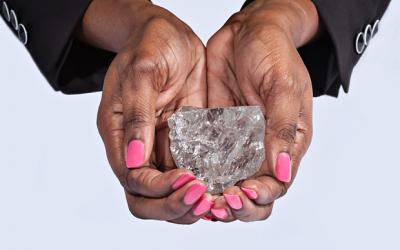
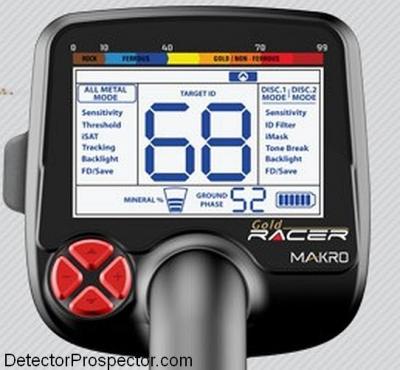
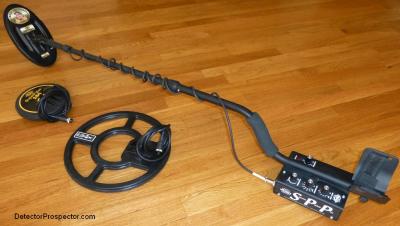
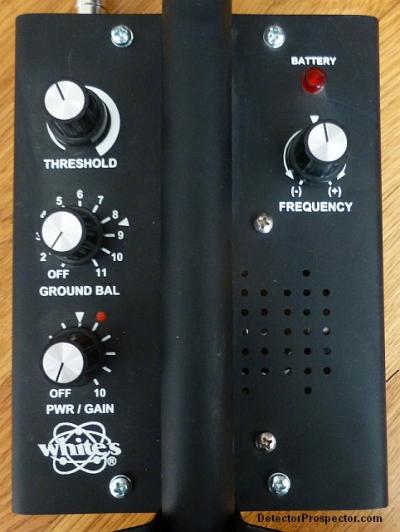
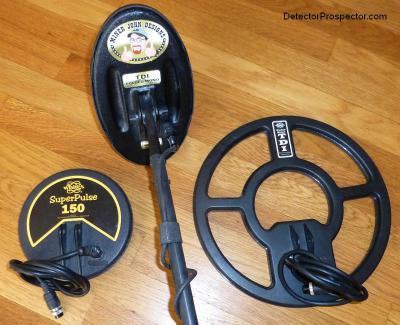
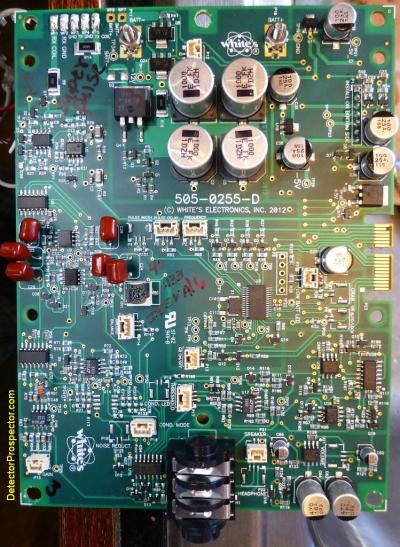
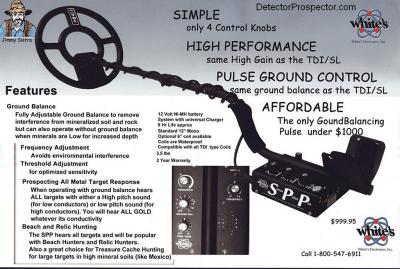
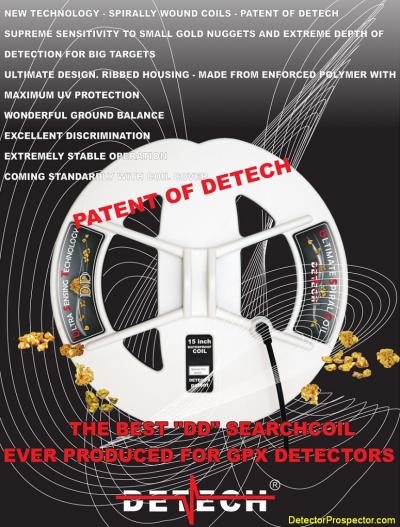
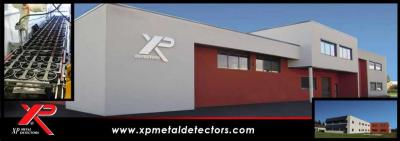
New DETECH 15" DD Coil For Minelab GPX
in Minelab Metal Detectors
Posted
There is detailed review information on the coil from Nenad Lonic in Australia at https://www.prospectingaustralia.com.au/forum/viewtopic.php?pid=203964#p203964